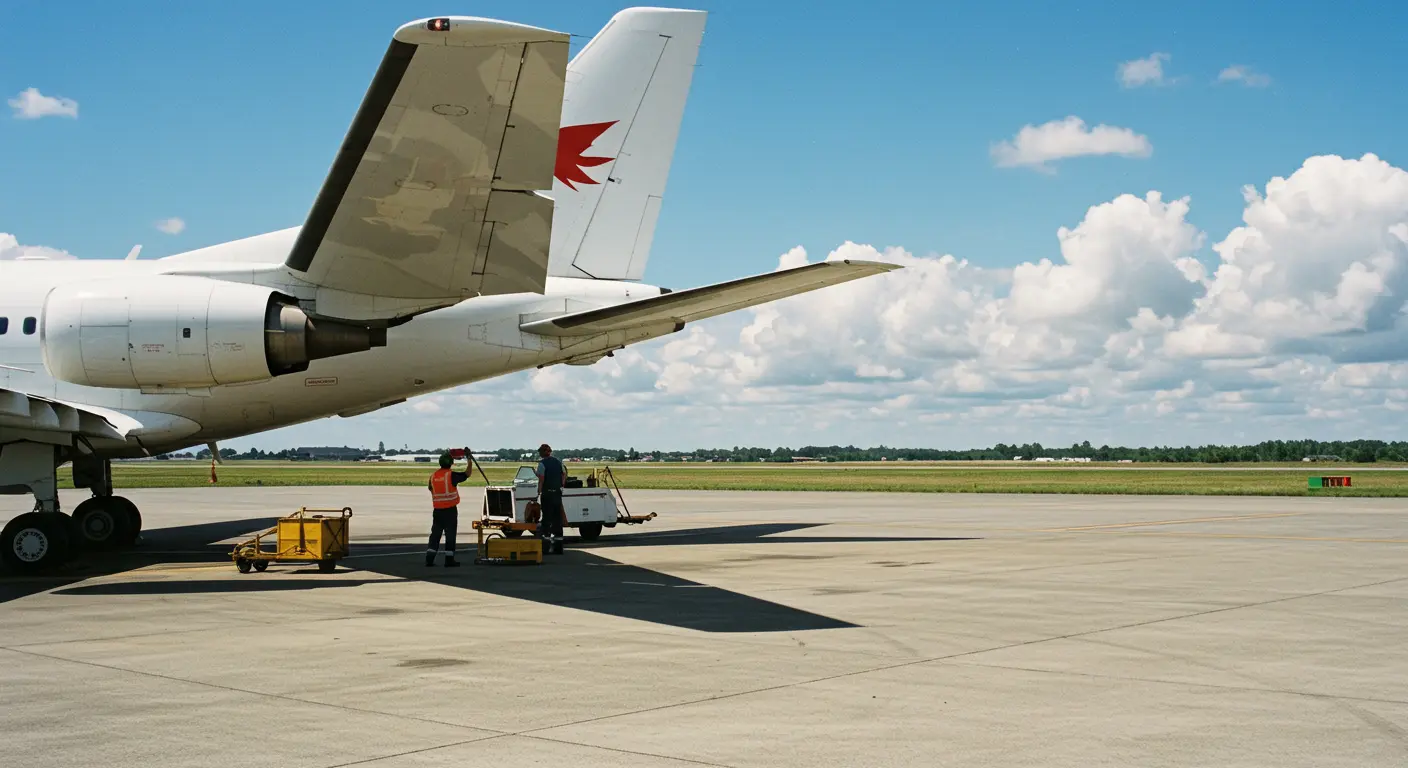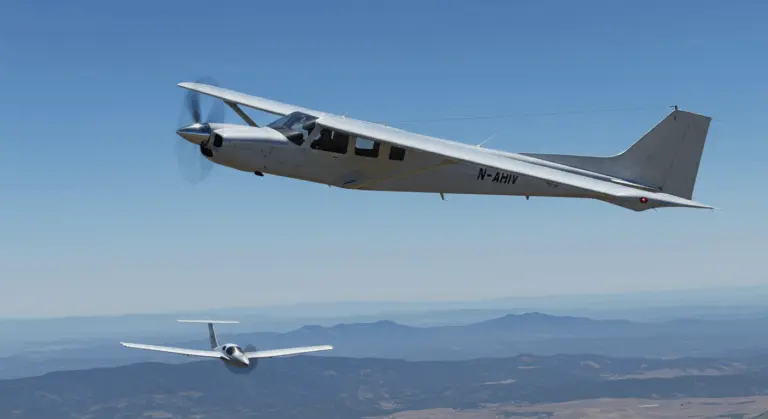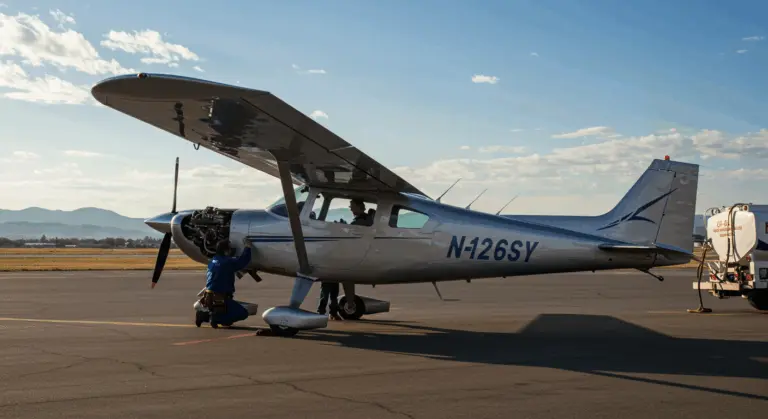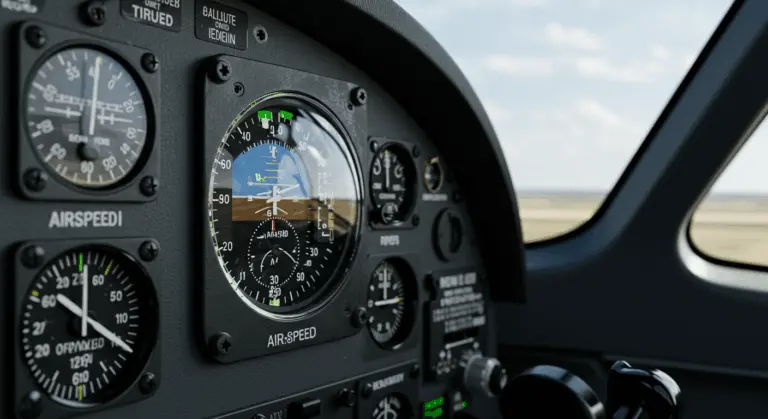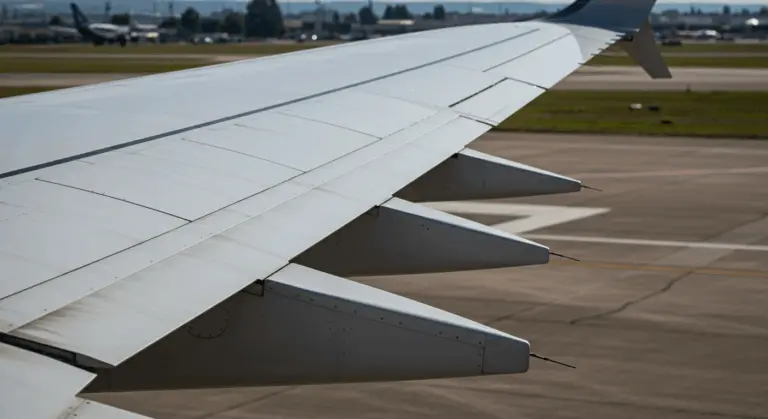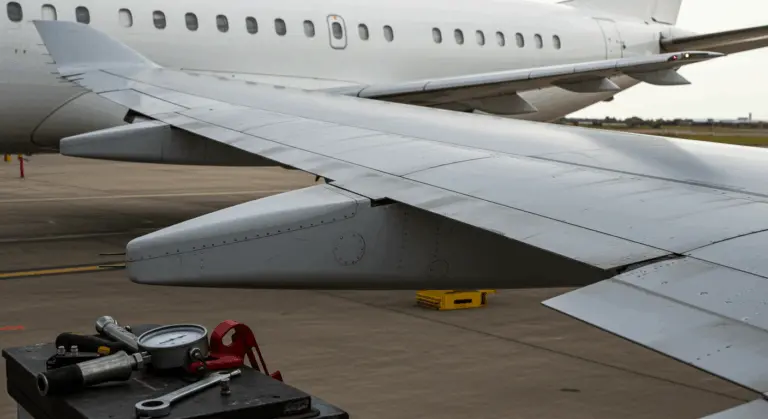Understanding Tailplane Stall: Causes, Prevention, and Recovery
What is a Tailplane Stall?
A tailplane stall represents a dangerous aerodynamic phenomenon where the horizontal stabilizer—the aircraft’s rear lifting surface—suddenly loses its ability to generate lift. This isn’t your typical wing stall that pilots train for extensively. When the horizontal stabilizer’s angle of attack surpasses its critical threshold, airflow separates abruptly from the surface, causing an abrupt loss of the essential downward force that keeps aircraft balanced.
The horizontal stabilizer acts as aviation’s unsung hero. During normal flight, this surface operates continuously, generating precise downward force to maintain pitch stability and provide responsive control. But when a tailplane stall strikes? That delicate balance shatters instantly, often sending the aircraft into a sudden, aggressive nose-down attitude that can quickly spiral into an uncontrollable dive.
Several factors can trigger a tailplane stall: excessive back pressure on controls, violent turbulence, and—most dangerously—ice buildup along the horizontal stabilizer’s leading edge. Tailplane stalls are especially dangerous because They’re far more devastating than conventional wing stalls, often triggering steep, unrecoverable dives.
The resulting pitch-down can be catastrophically abrupt. Consider a steep dive that defies pilot input, especially lethal at low altitudes where recovery time simply doesn’t exist.
Causes of Tailplane Stall
Ice accumulation on the horizontal stabilizer’s leading edge is the main cause behind tailplane stalls. When ice crystallizes on this critical surface, it disrupts normal airflow patterns, triggering boundary layer separation and ultimately destroying aerodynamic effectiveness. This ice accumulation doesn’t just alter the tailplane’s profile—it transforms it into an aerodynamic liability, simultaneously increasing drag while crippling its ability to generate the vital downward force essential for aircraft stability.
Aircraft configuration plays a crucial role. High-wing designs? They’re particularly vulnerable to tailplane stalls.
Mixed icing conditions create dangerous conditions—a harmful combination of clear and rime ice that creates jagged, irregular surfaces. These formations severely disrupt airflow, dramatically spiking the stabilizer’s stall speed to dangerous levels.
Flap configuration is another important factor. When flaps extend fully—standard procedure during approach and landing—the aircraft’s aerodynamic characteristics change significantly. Full flap deployment pushes the center of lift aft on the main wings, demanding significantly more downward force from the tailplane to maintain pitch equilibrium. Consider this increased workload imposed on a horizontal stabilizer already compromised by ice accumulation. This creates a dangerous situation as the tailplane’s capabilities are pushed beyond their limits.
When these factors combine—high-wing aircraft, icing conditions, and fully extended flaps—creates an extremely hazardous situation. There’s virtually no margin for error during those critical flight phases when precision matters most.
Warning Signs of an Imminent Tailplane Stall
Recognizing an impending tailplane stall requires keen awareness from pilots. This is because unlike wing stalls, tailplane stalls whisper their warnings through subtle, easily misinterpreted signals that can fool even experienced aviators.
The clearest early warning sign is Unusual control column behavior—specifically, a sudden lightening or rhythmic buffeting of elevator controls. Pilots might notice the control column becoming unexpectedly feather-light or developing a distinct pulsating sensation as the tailplane approaches stall conditions. This feels nothing like a conventional wing stall, where controls typically grow heavy and sluggish.
Another red flag emerges during configuration changes: unexpected pitch control difficulties. Consider this scenario: you’re lowering flaps or reducing power in icing conditions when suddenly the aircraft develops an uncommanded nose-down tendency that fights your back pressure. Importantly, applying more back pressure actually makes things worse. This counterintuitive behavior serves as a hallmark distinction between tailplane and conventional wing stalls.
Unfortunately, standard stall warning systems focus exclusively on the main wing, leaving tailplane conditions undetected. Even advanced aircraft with Angle of Attack indicators provide better situational awareness, but pilots cannot depend on traditional stall warnings for tailplane protection.
Pilots should remain vigilant for airframe vibrations or shuddering, particularly tremors transmitted through the control column—these may signal disturbed airflow over the horizontal stabilizer. When operating in icing conditions, any unexpected control anomaly should trigger immediate concern about potential tailplane icing and escalating stall risk. When these warning signs converge—especially in high-risk scenarios involving high-wing aircraft, icing environments, and extended flaps—immediate pilot intervention becomes absolutely critical to prevent full tailplane stall development.
Tailplane Stall Prevention Strategies
Prevention is more effective than recovery when dealing with tailplane stalls—these dangerous events can destroy aircraft control in seconds. Effective prevention demands both strategic planning and precise operational execution.
The primary prevention strategy is to Avoid known risk conditions whenever possible. This means scrutinizing weather forecasts for potential icing, especially when flying high-wing aircraft that are particularly susceptible to tailplane stalls. When icing conditions become unavoidable, pilots must maintain laser-focused monitoring of ice accumulation on all surfaces—not just the wings. Even minimal ice on the horizontal stabilizer can catastrophically alter its aerodynamic characteristics.
Flap management is essential in tailplane stall prevention. Since fully extended flaps dramatically increase the tailplane’s angle of attack—particularly in high-wing configurations—pilots should strongly consider reduced flap settings when operating in icing conditions. This seemingly simple adjustment can provide substantial protection against exceeding the tailplane’s critical angle of attack, especially when ice has already begun accumulating on the horizontal stabilizer.
Airspeed management offers additional protection. Maintaining adequate airspeed provides important safety margins against any aerodynamic stall scenario. Pilots must exercise particular caution during icing-condition approaches, where the deadly combination of reduced airspeeds and configuration changes creates an environment ripe for tailplane stalls.
Aircraft equipped with angle of attack indicators offer pilots enhanced situational awareness—but only if they’re trained to interpret these instruments correctly, especially during high-risk operations. By maintaining constant awareness of the aircraft’s aerodynamic state, pilots can implement corrective measures before reaching critical angles of attack.
The most important prevention approach is Being mentally prepared to reduce angle of attack at the first hint of trouble. This demands overriding the natural instinct to pull back during typical wing stalls—a counterintuitive response that could save lives.
How to Recover from a Tailplane Stall
Recovery depends on one critical action: immediately reducing the tailplane’s angle of attack by releasing back pressure or pushing the yoke forward. This response contradicts conventional wing stall recovery instincts, but it’s absolutely essential for reattaching airflow to the compromised tail surface.
When tailplane stall warning signs manifest, pilots must promptly decrease the aircraft’s pitch attitude—ideally maintaining no more than 20 degrees nose-up. This pitch reduction helps restore proper airflow over the horizontal stabilizer. This is where tailplane stall recovery diverges from wing stall procedures: while wing stalls typically call for immediate power addition, power adjustments during tailplane stall recovery require extreme caution. This is because increased thrust can actually worsen the situation by intensifying downwash onto the already-compromised tailplane.
Should the aircraft begin rolling, employ coordinated rudder and aileron inputs to restore level flight. Avoid abrupt or excessive control movements—these can intensify the stall or potentially induce a spin.
Speed management is important during recovery phases. Pilots should execute a gentle dive to build airspeed, enhancing the effectiveness of all control surfaces. This technique enables recovery with minimal altitude sacrifice, though altitude preservation must never supersede reducing angle of attack—the paramount objective in any stall recovery scenario.
For aircraft caught in landing configuration during a tailplane stall, pilots should consider incremental flap retraction rather than wholesale flap stowage. This graduated approach prevents sudden airflow changes that could further destabilize the aircraft. Each recovery step should flow smoothly to avoid triggering secondary aerodynamic complications.
The best approach to tailplane stall recovery is Catching it before full development occurs, achieving zero altitude loss. By recognizing early warning indicators and implementing swift corrective action, pilots can often arrest the stall before it fully manifests. This proactive approach becomes particularly vital in icing conditions, where tailplane stall onset can be both rapid and severe.
The Impact of Ice on Tailplane Stall
Ice accumulation stands as the most insidious catalyst for tailplane stalls, fundamentally corrupting the aerodynamic profile of this critical control surface.
Research shows that mixed ice formations can spike the tailplane’s stall speed by 20–30 knots. This creates a treacherous scenario where normal approach speeds become inadequate for safe flight.
Aircraft featuring unpowered (reversible) elevator controls face particular vulnerability, as pilots can actually feel aerodynamic warnings like control lightening. Powered control systems aren’t immune, but their warning signs often prove more elusive.
High-Wing Aircraft and Tailplane Stall Risks
Aircraft design configuration dramatically influences tailplane stall susceptibility, with high-wing and low-wing designs exhibiting vastly different aerodynamic personalities. High-wing aircraft demonstrate unique behaviors that directly shape their tailplane stall risk profile and warning characteristics.
T-tail configurations present especially serious challenges regarding tailplane stalls. These designs—where the horizontal stabilizer perches atop the vertical fin—face extreme vulnerability to a condition known as deep stall. In this dangerous situation, disturbed airflow from the stalled main wing completely engulfs the T-tail surfaces, rendering elevator controls utterly useless. Recovery becomes extremely difficult or impossible, as pilots lose their fundamental ability to pitch the nose down and reduce angle of attack—the cornerstone technique for any stall recovery.
When tailplane stalls strike during turning flight, aircraft behavior becomes frighteningly unpredictable. The stall typically occurs at higher airspeeds than pilots anticipate, especially with ice contamination present. Aircraft may exhibit sudden, violent pitching and rolling motions with minimal warning. Depending on whether the aircraft is slipping (inside rudder) or skidding (outside rudder) during the turn, it may roll explosively toward either the outside or inside the turn. This erratic rolling tendency complicates recovery efforts and significantly increases spin entry risk if proper techniques aren’t immediately applied.
Conclusion: Key Takeaways on Tailplane Stalls
Tailplane stalls rank among aviation’s most treacherous aerodynamic hazards. When airflow separates from the horizontal stabilizer—typically triggered by excessive angle of attack or ice accumulation—the result is catastrophic: sudden lift loss and potentially fatal nose-down pitching moments. Though relatively uncommon, these events can prove lethal, as tragically demonstrated in the 1994 ATR 72 crash in Rose lawn, Indiana, where ice-induced tailplane stall led to complete loss of control.
Unlike conventional wing stalls—routinely practiced during pilot training—tailplane stalls cannot be safely simulated in most aircraft. This highlights why prevention must remain the primary focus for pilots. The most critical risk factors demand constant vigilance:
-
Aircraft Configuration: High-wing designs are more susceptible, especially with full flaps.
-
Icing Conditions: Ice is a primary catalyst that can significantly increase the tailplane’s stall speed.
-
Flap Extension: Increases the aerodynamic load on the tailplane, raising its angle of attack.
-
Control Systems: Aircraft with unpowered (reversible) elevator controls are more vulnerable.
Early recognition of warning signs—control column buffeting, lightening control forces, or uncommanded pitch changes—is essential for preventing full stall development.
The aviation industry continues advancing aircraft design, certification standards, and pilot training to address tailplane stall risks. However, pilots bear the primary responsibility to pilots to thoroughly understand this phenomenon and implement appropriate prevention strategies. By respecting their aircraft’s aerodynamic limitations and exercising proper caution in high-risk conditions, pilots can effectively neutralize the dangers associated with this potentially lethal aerodynamic event.

